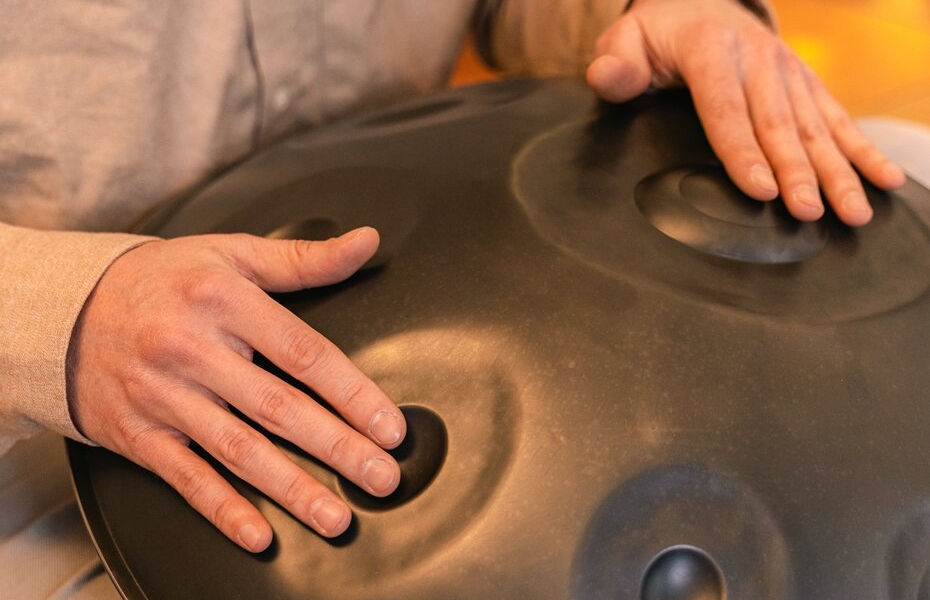Welcome to the magical world of handpans! These magical instruments are known for their soothing sounds and captivating melodies, making them truly beautiful instruments. However, with so many handpans for sale available today and choices available it may feel daunting finding just one to suit you; but don’t worry, we are here to assist you!
This guide provides the top 10 essential tips to ensure you find a handpan instrument that best meets your musical and personal requirements.
- Trust Your Ears and Explore Sound
Your journey begins with sound. Explore handpans by exploring YouTube videos – search “handpan” and navigate from link to link listening to an array of instruments. Put on headphones so that you can appreciate all their subtleties such as tone, sustain, tuning balance between notes, dynamic range and see which handpan stands out among them all. Take note of what makes each handpan unique!
Listening is key in becoming familiar with each instrument’s distinct qualities and finding one that speaks to you, such as handpans. As more videos you watch, the faster you will become able to differentiate between high-quality instruments and those which sound less appealing.
- Know What You Want Before purchasing, it is essential that you understand the characteristics of a quality handpan. Here are seven indicators of quality in handpans:
- Tuning: Accurate and consistent across all notes.
- Tone: Rich and pleasant to the ear.
- Sustain: Notes should sustain for an impressive duration before finally becoming dissonant again.
- Balance: All notes must sound equal clear and present.
- Absence of Cross-Talk: Notes should not interfere with each other.
- Dynamic Range: Being able to play both softly and loudly is necessary, while Harmonics Precision requires overtones that complement fundamental notes.
- By understanding these features, you will be better equipped to make informed choices when selecting a handpan.
- Trust Your Fingers
For best results, whenever possible it is advisable to try before purchasing. Visiting handpan festivals, forming relationships with fellow handpan players in your area, or reaching out to reputable makers may allow for this experience. A quality handpan should feel natural and intuitive to play for beginners alike – so take your time, explore it while keeping these 7 quality marks from point 2 in mind during each session you play on it.
- Understand Your Needs and Select the Appropriate Scale
Handpan scales may seem complicated at first, but we have you covered! Don’t be intimidated; we’re here to make things easy for you.
Returning to YouTube, listen closely for different scales used in videos – noting which ones resonate with you – minor or major scales; soft or upbeat beats; bassy or bright tones? Perhaps certain cultural influences such as oriental music, jazz music, blues music or celtic may provide useful clues?
Once you have your list together, consider how you will use your handpan. Will it be used for solo jamming sessions, composition projects or simply adding another voice to existing instruments? Choosing one that supports your musical goals is essential.
- Trust Your Instincts and Don’t Get Scammed
Your instinct should always be your guide when purchasing a handpan. Here are some red flags to watch out for:
If the price seems too good to be true, it probably is. Only purchase handpan from reliable sources.
Research the maker and his/her background. If a note sounds off or the reality doesn’t match what was presented on video, or something doesn’t feel quite right – step away immediately. On the other hand, if something inspires such great joy that it needs immediate action – take some time out before making an impulsive decision – it’s always wiser!
- Select the Appropriate Handpan Material
There are three primary handpan materials, each offering specific advantages and considerations:
Raw Steel:Affordable but more susceptible to rust, needing extra care and maintenance for optimal use in humid environments. Not recommended.
Steel-Coated:Lighter and less expensive but may rust if scratched and offer less dynamic range than raw steel.
Stainless Steel: Highly corrosion resistant and ideal for slow playing with long sustain, stainless steel is more expensive and harder to work with than its alternatives, potentially impacting quality and compromising sonic purity.
At Cosmos Handpan, we recognize that finding the ideal material will depend on several factors – your playing style, environment and maintenance obligations are all critical considerations when selecting an instrument that best meets your needs! Visit us online now at https://www.cosmoshandpan.com/ to explore all our different handpan models made from various materials!
- Select My Handpan
The size of a handpan impacts comfort, range and ease of playing – here are some key factors to keep in mind:
- Number of Notes:A higher note count typically corresponds to larger instruments for improved spacing.
- Scale:Larger handpans typically feature lower scale frequencies while smaller models tend towards higher pitches.
- Physicality: Smaller handpans can be beneficial for children, people with shorter arms or those who have physical limitations. Travel: These lighter handpans are easier to carry around in overhead compartments for better transport convenience.
- Select Your Handpan’s Notes
Handpans typically range between eight and ten notes around the “ding,” though some models can boast up to 20 or more! When it comes to selecting the number of notes that make up an ideal handpan for yourself and technical skill level.
Fewer Notes
Pros:Generally more affordable, easier to learn and play for beginners.
Cons:Initially limited range of sounds; for beginners, 8-9 notes on the top shell with 1-2 bottom notes is an ideal starting point; focus on enjoying and mastering its basics first before considering larger handpans with more notes.
- Explore Additional Features
While not essential, some handpans come equipped with extra features that can enhance your playing experience:
Dings: Dings are small indentations on the playing surface that produce high-pitched notes, adding an individualistic touch to your playing style.
Guitarron:A raised area designed to facilitate different playing techniques and percussive sounds on its playing surface.
- Be Wary of Scams
Unfortunately, scams can be commonplace in the handpan market. Be wary of deals that seem too good to be true, lack of guarantees, or sellers with poor reputations. Always use secure payment methods when purchasing from unknown sources; reading reviews and seeking recommendations from your handpan community may also help identify fraudulent sellers.
If you require any guidance or have any inquiries about handpan instruments, don’t hesitate to reach out to experienced players, makers, and retailers like Cosmos Handpan for advice and assistance in finding your ideal instrument. They are more than willing to share their knowledge and assist with finding it!
Conclusion
By following these 10 essential tips, you’ll be equipped to navigate the world of handpan for sale and find an instrument that perfectly complements your musical journey. Trust your instincts, prioritize quality over price, and don’t be shy about seeking help if needed – most importantly have fun exploring this vibrant universe of handpans!



















